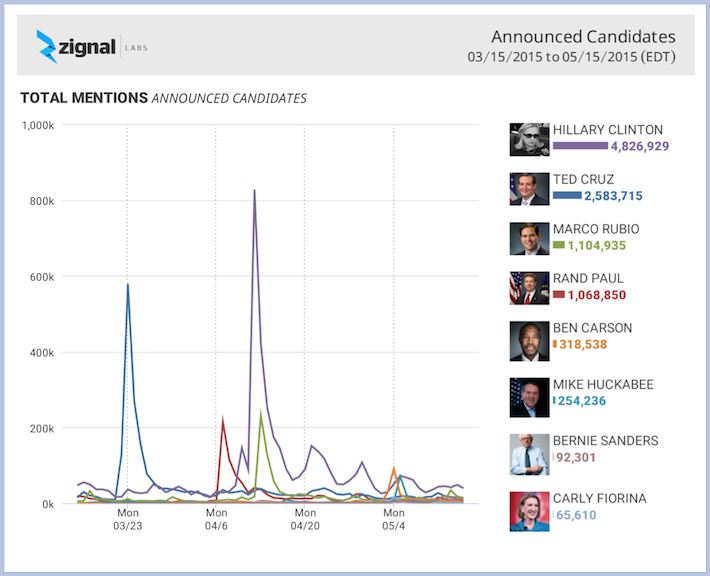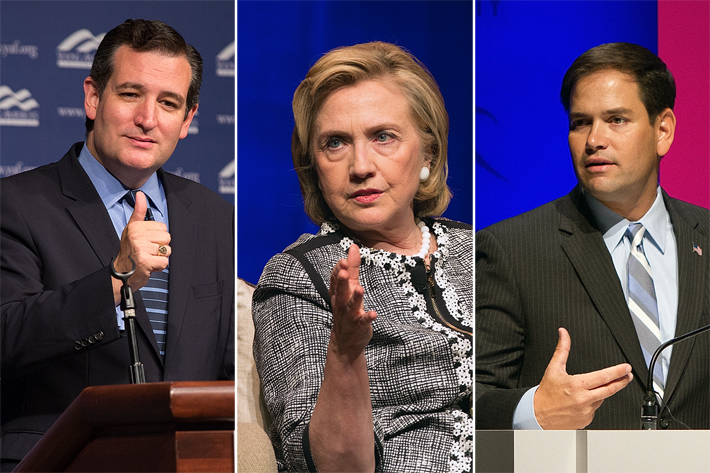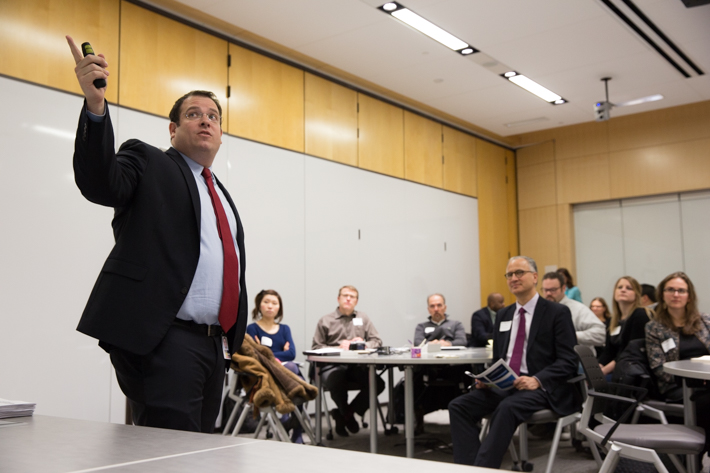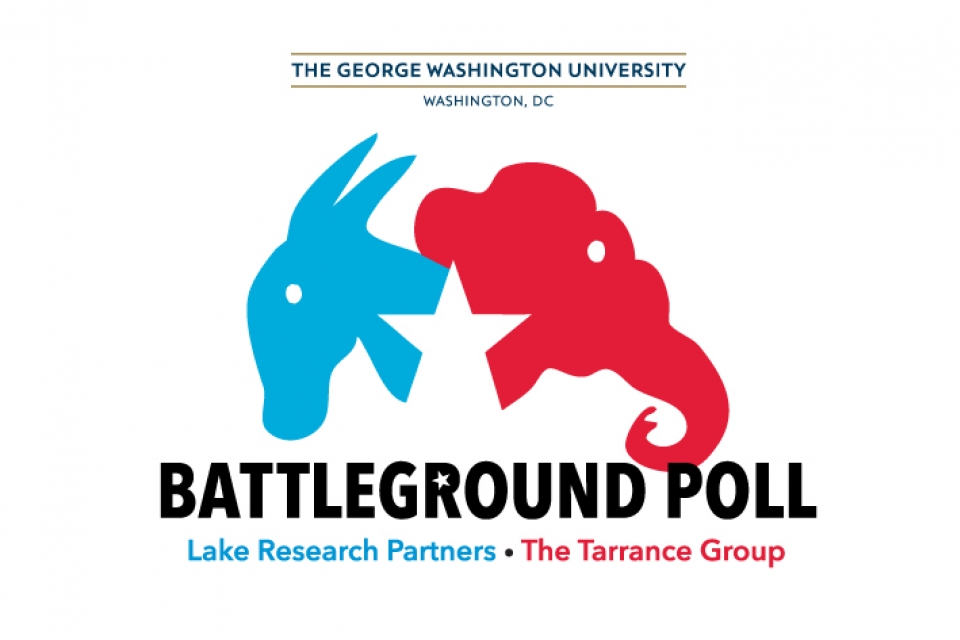By James Irwin
Political wonks follow polls, endorsements and money to study campaigns. Now, they can track the power of a candidate’s words, too.
A joint endeavor between the George Washington University Graduate School of Political Management and Zignal Labs launched Thursday assesses the effectiveness of a campaign’s communication strategies by bringing cross media analytics and expert interpretation together to study the power of the candidate’s rhetoric.
The first report of the Public Echoes Of Rhetoric In America (PEORIA) project focuses on 2016 presidential candidates and the effectiveness of their formal announcements to run.
“We’re quantifying the old vaudeville and marketing phrase about how well messages ‘play in Peoria’ and everywhere else,” said Michael Cornfield, GSPM associate professor and Global Center for Political Engagement research director. “Whose brands are catching on—and whose are catching flak?”
The report relies on a mix of indicators from Zignal, which curates mentions of the candidates in real time from social media, more than 200,000 news outlets and more than 900 domestic television channels. From that information, Dr. Cornfield and GSPM Associate Professor and Political Management Program Director Lara Brown tracked and measured more than 10.3 million mentions of presidential hopefuls in news and social media from March 15 to May 15.
“Text-mining treats words as data,” Dr. Cornfield said. “For some years I’ve wanted to bring this public opinion research tool into the campaign arena to learn about what people are saying about the candidates.”
Their findings, Dr. Brown said, are helping to “make the ‘invisible primary’ more visible.” She and Dr. Cornfield are looking not only at total mentions of the candidates, but also the length of time their announcements remained popular topics, the number of positive vs. negative mentions surrounding those announcements and how media sentiment for the candidates changed pre- and post-announcement.
Relying on Zignal’s data, the two professors rated the echo value of each candidate’s campaign on a scale of 1 to 11.
 Hillary Clinton was mentioned more than 4.8 million times from March 15 to May 15, with the majority of mentions coming in a one-week window surrounding her April 12 announcement to run for president.
Hillary Clinton was mentioned more than 4.8 million times from March 15 to May 15, with the majority of mentions coming in a one-week window surrounding her April 12 announcement to run for president.
Democratic frontrunner Hillary Clinton received a GSPM Echo Rating score of 8, highest in the field. She dominated in both total mentions and message resonance, accounting for 4.8 million of the 10.3 million mentions. Her announcement echo (the number of days it took for the spike associated with her announcement to settle at a steady plateau) was six days. That was a full day longer than any other candidate. Her net sentiment (percentage of positive mentions minus negative mentions) topped the field at plus-26.6 percent. She and Republican hopeful Ted Cruz, who announced his candidacy March 23, are the two candidates who have established some semblance of branded visibility in the early days of their campaigns, according to the report.
Sen. Cruz was mentioned 2.5 million times from March 15 to May 15. He received a GSPM Echo Rating of 7.
“The duration of [his] echo was a full five days,” Dr. Brown said. “When we think about the Republican field, it’s apparently true that Ted Cruz did have an advantage by going first.”
Strength and sentiment for the candidates fluctuated. Ms. Clinton and Republican candidate Carly Fiorina had strongly positive echos, while Republican candidates Rand Paul and Mike Huckabee had strongly negative echoes. Democratic upstart Bernie Sanders, Dr. Brown said, received virtually no attention when he formally announced his intent to run April 30, but boosted his visibility and appeal with consecutive appearances on network Sunday talk shows This Week and Face The Nation on May 4 and 11, respectively.
“He is the only one of the candidates for whom net sentiment improved after his announcement,” Dr. Cornfield said. “We think there are a number of reasons behind this. We think progressive activists warmed to his entrance, as did a lot of people who wanted to see Clinton face primary competition. Bernie Sanders’ echo got warmer as the days went on.”




